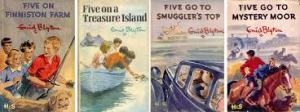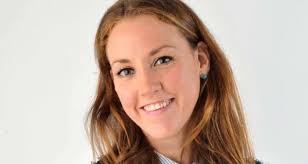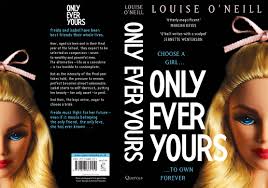Right, because I love you all and I know many of you could not make the Children’s Books Ireland Conference today in the Lexicon Library in Dun Laoghaire, here are some notes and thoughts on the day. The title was: A Day in the Life
Eoin Colfer
Eoin Colfer kicked off the proceedings in a lively manner with a funny and thought provoking talk about writing, his love of Ireland, how ‘place’ informs writers’ books and how his Laureate-ship is shaping up so far.
On writing he said: ‘It starts with character for me. My criminal mastermind, Artemis is based on my brother, Donal.’
‘People often say don’t write a local story. I think write a local story with universal themes.’
He said for him, having a new book out never gets old and he never takes it for granted:
‘It’s amazing to be published – to hold a new book in your hands – it’s always fantastic. Whatever else happens in your life, you’ll always have that.’
His aim with the Laureate events is to visit ‘tiny schools on remote islands who don’t normally get author visits… As a child I didn’t realise that writers were real people.’
He said: ‘Reaching that one kid, planting the seed of story in their head, that’s what the Laureate’s all about.’
On why Irish people are such good storytellers and writers:
Eoin explained that it’s in our blood. We grow up hearing stories.
‘Myths and legends are on the curriculum in Ireland. I was surprised to find this wasn’t the case in other countries.’
Alan Nolan
Next up was Alan Nolan who talked about the books he had written and the comics that had influenced him as a child.
‘The way to get children reading is to get them hooked on a series,’ he said. His job as Illustrator in Residence in the Church of Ireland College of Education is to ‘remind trainee teachers how much fun children’s books are.’
Monster Doodle
During lunch there was a wonderful Monster Doodle for adults – where everyone got stuck in.
Sarah Crossan
Next up was Sarah Crossan in conversation with the wonderful Colm Keegan, Writer in Residence at dlr Libraries.
She spoke passionately about engaging teens with poetry and why she writes novels in verse for teens. Her new novel in verse, One (and not Won as she pointed out) will be published in August and is about conjoined twins. It sounds great.
Next up where the New Writers – many new writers took to the stage to share their books with the audience in 5 minute sessions.
This was an interesting insight into the way people approached being asked to do this. Some gave some background to the book, others gave a straight reading without any intro. The ones that worked the best I think did a little of both. The ones that stood out for me were Dave Rudden who is an excellent reader of his own work and gave a short intro which set the scene well and Moira Fowley-Doyle. She read with a lot of passion and it’s my kind of book – a family/friendship drama with a clever and fresh premise. It’s called The Accident Season and it’s about a family who for one month a year are horribly and tragically accident prone. She read the perfect section (from the start of the book so it didn’t need an intro) and I really enjoyed her reading.
Don’t get me wrong, I enjoyed them all (other writers included Patricia Forde, Kim Hood, Shane Hegarty and a lovely picture book guy), but it did make me ponder the importance of professional development for writers and how new writers need help preparing for readings and events. I am going to write a series of blogs on events/readings and how to write and deliver them when I get a chance as I think it might be helpful to newer writers.
I was a nervous wreck when I started out doing events! I love doing them now, as long as I am well prepared. You can throw me in front of any age group from babies and toddlers to teens and I'll have something to say, but it wasn't always the case. It's taken me years to be confident in front of an audience. I would have loved to shadow a writer before I started doing events. And I would have loved some guidance on how to put a good talk together. So I'll share what I can soon, I promise!
I'll also post some publicity and marketing tips and interviews with publishing pr people this year - remind me if I forget!
Julia Eccleshare
Finally after a very nice coffee break – with biscuits – was the inspiring Julia Eccleshare, Children’s Books Editor for the Guardian. I thought she was FANTASTIC and spoke such sense. Of course, she did say that writers made extra-good reviewers as they understood things like a writer’s intent and theme, so I may be slightly biased.
She spoke lyrically about her job – how she has to sift through over 10k children’s books a year to select the 45 books she can review in the Guardian.
She is passionate about books and stories. She said ‘I never go anywhere without thinking about a story.’
And ‘Everything in my life is coloured by the stories I read.’
She explained how these days writers have to be advocates for their books. Gone are the days where you could write a book and sit back on your laurels. You have to get out there and do events. ‘You cannot sit at home and be shy.’
She told us how JK Rowling’s books were game changers – how after the Harry Potter series, children’s books became cool and people started talking about stories and children’s books like never before. She mentioned Philip Pullman winning the overall Whitbread Award with The Amber Spyglass and quoted him: ‘Children’s books are the home of the story.’
She spoke about the importance of children’s books: ‘Children learn things from children’s books that their parents don’t want them to know… There is no serendipity for children anymore. They are the most watched children ever. How do they learn that things go wrong (if they are always being watched)?’
Books help them explore dangerous worlds and allow them have adventures and decide what kind of people they would like to be, she explained.
It was a wonderful talk and she’s a powerhouse.
The day ended with a drinks reception where I talked to Julia and many writers and readers and ate some very fine finger food.
So ended the CBI Day – thanks to all the speakers, to Marian Keyes who provided the wonderful venue and to the girls at CBI, Elaina, Jenny and Aoife for a cracking event.
Yours in books,
Sarah XXX
PS If you read my blog and find it useful, do let me know via the comments or on Facebook or Twitter. :)



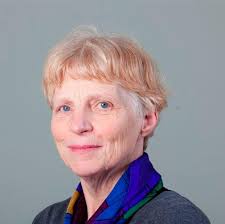



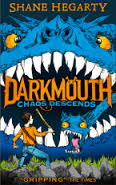







![IMG_4461[1]](https://images.squarespace-cdn.com/content/v1/58973315e4fcb5808a5b7d9e/1486377412374-N4FMM3IJPGA4FLHE08KP/img_44611-e1413837064268.jpg)
![IMG_4462[1]](https://images.squarespace-cdn.com/content/v1/58973315e4fcb5808a5b7d9e/1486377412203-07N7T8NBY0IYO743L4IH/img_44621-e1413837089589.jpg)
